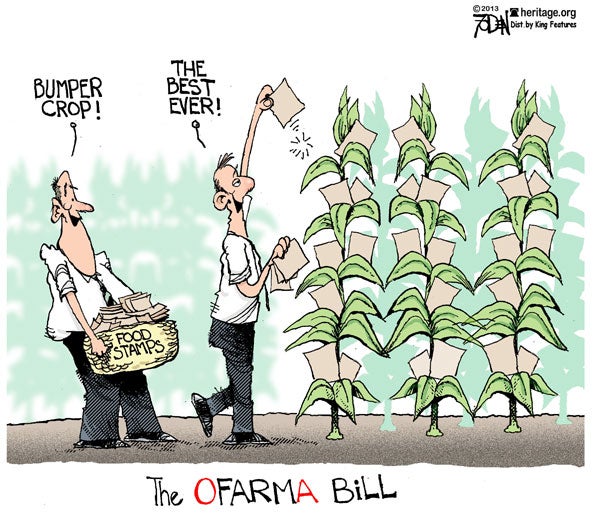The House’s rejection of the food stamp/farm bill was a major victory for fiscal responsibility and limited government. Instead of adopting a fundamentally flawed $1 trillion farm bill, the House shot down the legislation by a 195–234 bipartisan vote.
Bill proponents have consistently claimed throughout the farm bill debate that “something is better than nothing.” And within minutes of the bill’s defeat, the fear-mongering grew even louder. Representative Frank Lucas (R–OK), chairman of the House Agriculture Committee, alleged that the bill was necessary to avoid “farm crises.”
The World Isn’t Going to End
Congress needs to take a deep breath. The world isn’t about to end. Food stamps will still be provided to recipients. Subsidies will still go to farmers—current appropriations extend through late fall. And permanently authorized crop insurance subsidies will continue.
According to the Government Accountability Office, many programs, including food stamps, don’t even need to be authorized (the farm bill is an authorization bill) if there are appropriations for the specific program. Even the infamous “dairy cliff” won’t occur until after December 31, 2013.
Between existing and future appropriations and, if necessary, an extension of current law, nothing will be different tomorrow than it was this week. A bad farm bill didn’t pass last year, and we’ve lived to tell about it.
False Choice
Simply put, the claim that something is better than nothing is a false choice. The real choice isn’t between something and nothing; it’s between a flawed farm bill and real reform.
Locking in Five Years of Bad Policy Is a Mistake
Had the proposed farm bill passed, the nation would be locked into five years of costly, misguided policy. The bipartisan rejection of the bill provides an opportunity to get the policies right. Taking a few months (or even longer) to craft new legislation can save taxpayers a bundle and set farmers free from government interference.
Now What?
The first step going forward is to separate food stamps from farm policy. Since 80 percent of the “farm” bill is food stamp funding, the legislation is a food stamp bill, not a farm bill. Both farm policy and the food stamp program need to be considered in distinct legislation so that lawmakers can analyze the issues on their own merits.
The second step is to reform the food stamp program and farm policy. There’s simply too much at stake for both taxpayers and farmers to rush through a flawed bill simply for the sake of doing something.





























